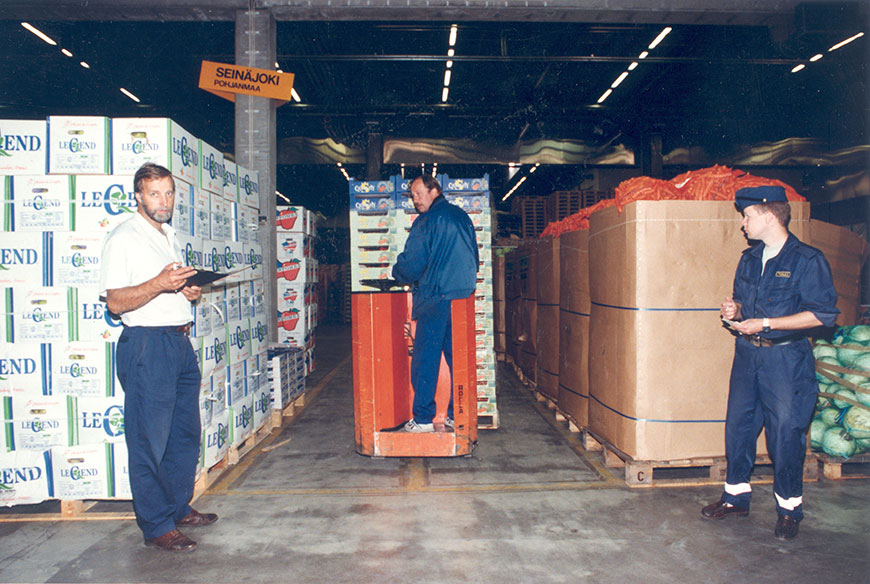History of Finnish Customs: EU membership
In the mid-1980s, European integration gained new momentum. In the beginning, very few people even dreamed of seeing Finland as a member of the EU. For a long time, Finland focused on joining only the European Economic Area, which in a way was an extended arena for free trade.
Membership in the European Economic Area and the EU required a lot of preparation by Customs, as most of the changes involved concerned matters that Customs handled in one way or another. In practice, membership in the European Union meant that not all goods that entered Finland were cleared through Customs anymore. Nevertheless, the supervision of national goods taxation remained a Customs task also at internal borders after 1 January 1995.
Customs started applying EU customs legislation. Customs clearance matters became the responsibility of the European Commission. Under steering by the Commission, EU customs administrations engaged in customs programmes, the first of which was “Customs 2000”. In practice, the programme required that the customs administrations of EU Member States operate under the concept of a joint EU customs service.
Finnish Customs had to tighten its grip on external borders. This was partly affected by the increase in goods traffic on Finland’s eastern and southern borders, a fact that required a lot more attention than in the past. EU membership also meant that Finland became a transit country for import goods to and from Russia, a fact which affected the storage of goods and the development of customs warehouses, among other matters. This type of traffic had a significant impact on customs enforcement. In 2000, a stationary vehicle X-ray facility started operating in Vaalimaa.
Free movement across internal borders posed particularly great challenges, as customs clearance details on incoming goods were no longer available. The role of information acquisition was highlighted and took on an international nature. Ever since the 1970s, customs administrations of various countries had engaged in close cooperation, but within the EU context, cooperation between customs authorities became and everyday routine. Finland also cooperated significantly with the Baltic countries and Russia.

Image: Finnish Customs continued taking samples of import foodstuffs also after Finland became an EU member.